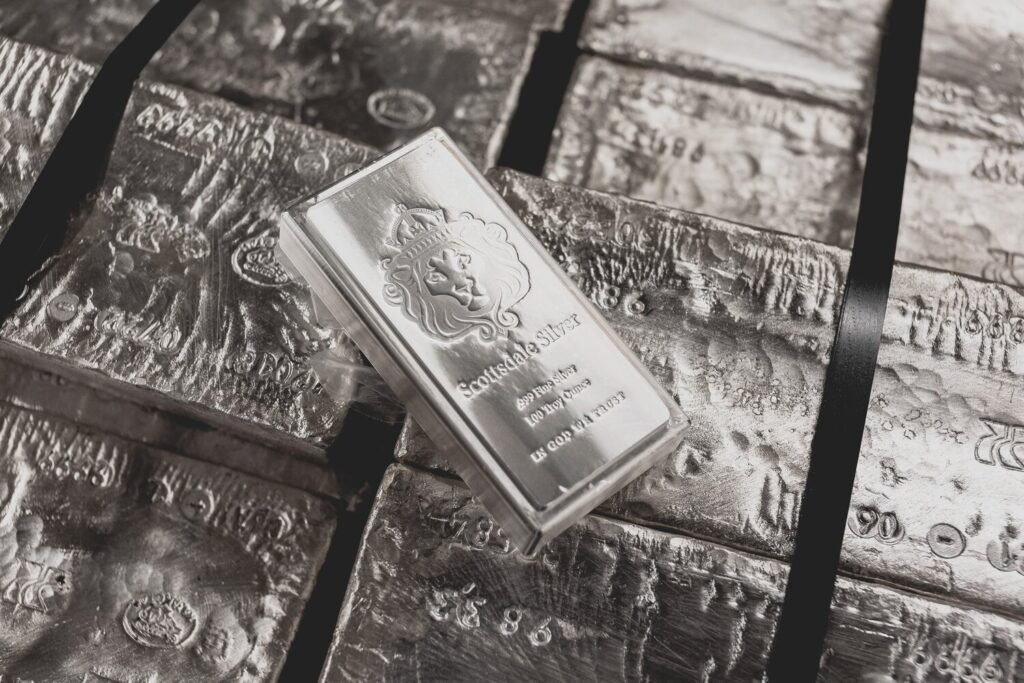The Global Silver Sintering Paste Market is predicted to develop at a compound annual growth rate (CAGR) of 6.4% from 2022 to 2030, according to Flair Insights, from its estimated value of USD 64 million in 2021 to USD 69 million in 2022 and USD 105 million by 2030.
Silver sintering paste is a type of highly silver-filled die-attached paste that has the ability to produce extremely high thermal conductivity. The lifespan of the device can be increased by up to ten times with silver sintered pastes, a powerful lead-free substitute for solder pastes. By employing it for printing or dispensing processes, higher heat conductivity in the lead frame and LED packaging applications may be guaranteed.
A silver paste, often referred to as silver sintering paste, is heated during the process of densifying it. A stronger link develops inside the material as a result of several concurrent processes, including densification, pore expansion, and grain growth. owing to the higher quality of these products, which display lower metallization and are appropriate for rapid silver sintering procedures on a variety of surfaces. These pastes are designed to easily integrate into a dispensing process without altering the deposition apparatus and have a high metal loading. The pastes can be used in rapid reflow-like (RFL) sintering processes to produce strong joints on a variety of common lead frame, DBC, and IPM pad finishes. They will firmly adhere to die with Ag, Au, or Cu surfaces.
More and more often, discrete and small module device applications do not suit solder or many popular epoxy-silver compounds. They might not be able to endure the harsh climatic conditions seen during extended mission profiles for automotive applications, for example. These mission features frequently result in larger temperature fluctuations and longer high-temperature operating life (HTOL) (thermally cycling). High electrical conductivity, great temperature applications, high reliability, and less reactivity than copper are all characteristics of silver sintering. Due to these advantages, silver sintering paste is in high demand on the market.
Although the process of utilising silver sintering paste to prepare the material is well known for increasing its characteristics, it has significant downsides. Because the components of high-performance LED products are small, sensitive, and require high precision levels, numerous micro- and nanostructures are commonly destroyed during the silver sintering process; this fault harms the industry. The global market for silver sintering paste is being constrained by this problem. The advantages of the silver sintering paste, however, are what spur market expansion.
Silver Sintering Paste Market Segmentation
Silver Sintering Paste Market, segment based on Type
The market for silver sintering paste is expected to be dominated by pressure sintering paste, which is currently the market leader. Because it can be maintained under high pressure, the pressure sintering paste method is well-known. Because pressure silver sintering provides improved thermal and electrical conductivity properties, power electronics applications may operate at high temperatures.
Eliminating precious metal finishing on substrate would make silver sintering much more accessible and be compatible with the existing supply system. This market for silver sintering paste should grow significantly.
The process of sintering a crushed material without pressure from an outside source at extremely high temperatures depends on the density of the material. By doing this, changes in the end product’s density are avoided, which are brought on by numerous recognised hot compressing techniques. Additionally, the final material can be pre-sintering techniques can also obtain the moulded substance or ceramic, and the final material can be moulded into the proper structure and size before the final process. Due to its capabilities, this kind of silver sintering is becoming more and more popular with consumers.
Silver Sintering Paste Market, segment based on Application
According to Application, the market for silver sintering paste is expected to grow at the fastest CAGR in the power semiconductor device sector. Silver-sintering paste is the substance that is currently utilised most commonly. A silver-sintered paste has a melting point of 960 degrees Celsius.
The silver-sintered paste has a high epoxy resin adhesion, boosts process yield overall, and keeps the components in a stable position for efficient management. It gains from having, among other things, the best thermal conductivity coefficient (>150 W/(mK)), the best electrical conductivity coefficient, and a high re-melting temperature (>400 C).
During the time of forecasting, the market for silver sintering paste is anticipated to expand significantly in the high-performance LED class. The main players on the market are manufacturing a lot of things. Demand for LED devices has increased as a result of consumers’ need to keep up with the latest developments in electronic devices like smartphones, tablets, and televisions.
In addition, procedures involving silver sintering paste are employed to sinter the high-performance LEDs used in these digital gadgets. Additionally, increased market production helps the big corporations keep a solid market share worth.
Regional Insights
North America will continue to dominate the market for silver sintering paste during the anticipated time frame. Semiconductors are one of the basic components of electronic devices and are frequently referred to as integrated circuits. Due to semiconductors working as the engine of innovation, microchips enable developments in artificial intelligence, transportation, healthcare, the military system, communications, and other disciplines. Semiconductors are the brains of modern electronics. Microchips were created in the U.S. because it is the country with the largest market share in the semiconductor industry.
Additionally, when compared across countries, it has the highest semiconductor R&D spending as a % of revenue. The sintering market is influenced by American dominance in the semiconductor sector. Additionally, this domain aims to significantly enhance comprehension of the sintering procedure across all other market industry sectors. Demand ultimately increases in the industries where the product is appropriate as consumers become more aware of its uses. As a result, it is anticipated that this region will be robust during the predicted period.
Europe is anticipated to dominate the market for silver sintering paste during the course of the projection. Due to the popularity of this paste among customers, the demand for sintering paste in this area is anticipated to increase.
Because there won’t be much demand from consumers over the estimated time, Asia-Pacific is expected to increase steadily. The government’s backing of the semiconductor sector in this region is rising, as is the shift in new technologies. As a result, the demand for silver sintering paste will grow.
Key Players
- Heraeus
- Indium
- Alpha Assembly Solutions
- Henkel
- Kyocera
- Namics
- Advanced Joining Technology (UK)
Segments covered in the report
By Type
- Pressure Sintering Paste
- Pressure-less Sintering Paste
By Applications
- Power Semiconductor Device
- RF Power Device
- High Performance LED
- Others
By Geography
- North America
- The U.S.
- Canada
- Mexico
- Europe
- France
- The UK
- Spain
- Germany
- Italy
- Rest of Europe
- Asia Pacific
- China
- Japan
- India
- Australia
- South Korea
- Rest of Asia Pacific
- The Middle East & Africa
- Saudi Arabia
- UAE
- Egypt
- Kuwait
- South Africa
- Rest of the Middle East & Africa
- Latin America
- Brazil
- Argentina
- Rest of Latin America



